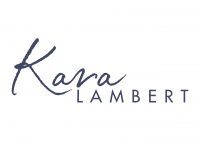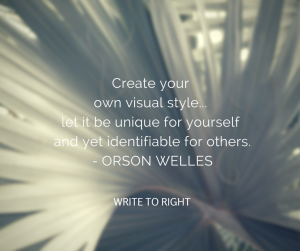I believe that a classic style never dates and consistency is key to delivering to your customers. But how does it apply to business and why is it important? Consider official letters from Government. They can be sent from anywhere in a country, not necessarily where you reside, but it will not matter where it is they will all have a similar look and feel. The easiest way to combine the two is to develop a business style guide.
Why is this important? People like consistency, we are generally adverse to change. If you were reading an official letter and it used terms interchangeably, changed its logo throughout, and referred to you or the representative in different ways you would start to question. You would question if they knew what they were doing, if it was actually an official letter, and how you would be treated face-to-face or on your next encounter.
So how does this apply to your business? Firstly, I could almost guarantee that there are other businesses around with a similar name and or function to yours. A consistent look to your communication (website, emails, Facebook, etc.) will save them any confusion as to which business they are talking with. Secondly, it is easier for a business owner to use one style for their communication, rather than feeling the need to make it up as they go along. It is also helpful if you have staff who write for the business. Thirdly, it can save you money when employing a consultant to undertake any communication tasks (developing a pamphlet, building a website, managing social media etc.).
Using a style guide has certainly helped me when writing for different media and clients. While working in government, there were guides for press releases, ministerials, client letters, and an overarching guide. Unless you are a business with a few hundred staff who communicate across many media and stakeholders, you are unlikely to need this many guides. However, a document that outlines your mission, vision, ideal client, benefits, key adjectives, and preferred tone is a worthy addition to your business. From here it can evolve to including which messages are distributed over particular media. You can even detail how minutes will be taken and distributed.
Consistent look
If you have been following the blog, you should now go back and revise the adjectives where your
goals/mission/vision and the needs/fears of your ideal customer cross. This will give you some grounding to develop the style guide.
Business name
You will need to consider how you will refer to your business. Will you use the name in full all the time, for the first time on a page or use, will you use a shortened version?Business owner/s
Have you thought about how you will refer to yourself as the business owner or owners? Will you use ‘I’, ‘we’, ‘they’, or your name or names? Although you will need to consider the tense of the text you are writing, this is one topic where I see a lot of inconsistency. Something you might wish to consider if you are struggling with this is if your customers would prefer to be spoken to in a formal or informal/conversational tone. An informal/conversational tone will use ‘I’ and the formal tone will use ‘we’ or ‘they’.Logo
Probably one of the easier aspects to settle on, except if you consider how it will be used online, in black and white, or if there is some instance where you will prefer a shortened version.Colours
Something I had previously overlooked was how I used colour through my communication. I underestimated how the use of consistent colours can reassure customers and develop your brand image. Consider the background colours to images or posters you develop and font colours for any communication. There is a simple rule of thumb applied to the use of colour online: There should be a high contrast between the background and the text colour, and avoid yellow text (many people find it difficult to read online).
Here is something I learnt as a manager, don’t refer people to a particular coloured text, it will be meaningless if they are colour blind.Font
Some businesses will consistently use one font for all communication. Others will use the font from their logo. This is a matter of style. Branding experts recommend using no more than three font styles in one image or document. Additionally, research indicates that people find text with serifs easier to read, something to consider if you are writing a larger document.Tense
The tense you use will generally depend on the topic or how the document is to be used. My word of advice is to be consistent. While there can be a need to jump between past, present, and future tenses; doing so can make your document harder to read and can cause confusion.
Ease of use
So, if you have detailed how your business will meet the above points, it will give you a handy guide when writing. Better still, if you and another person write for the business it will assist in having consistent look to your communication. I have found having a ready reference also helps me to quickly put together supporting images and documents (and I’m all for saving time).
Saving money
Employing a consultant to manage your social media, develop a website, or develop a document can be a costly, though worthwhile, venture. Having a document that outlines how you will refer to yourself, your business, how you want your logo used, and your business colours will save having this conversation with the consultant. It allows us an insight into the back end of your business and means that we can easily support you and help you to achieve your outcomes. Let’s face it, in anyone’s business time IS money.


